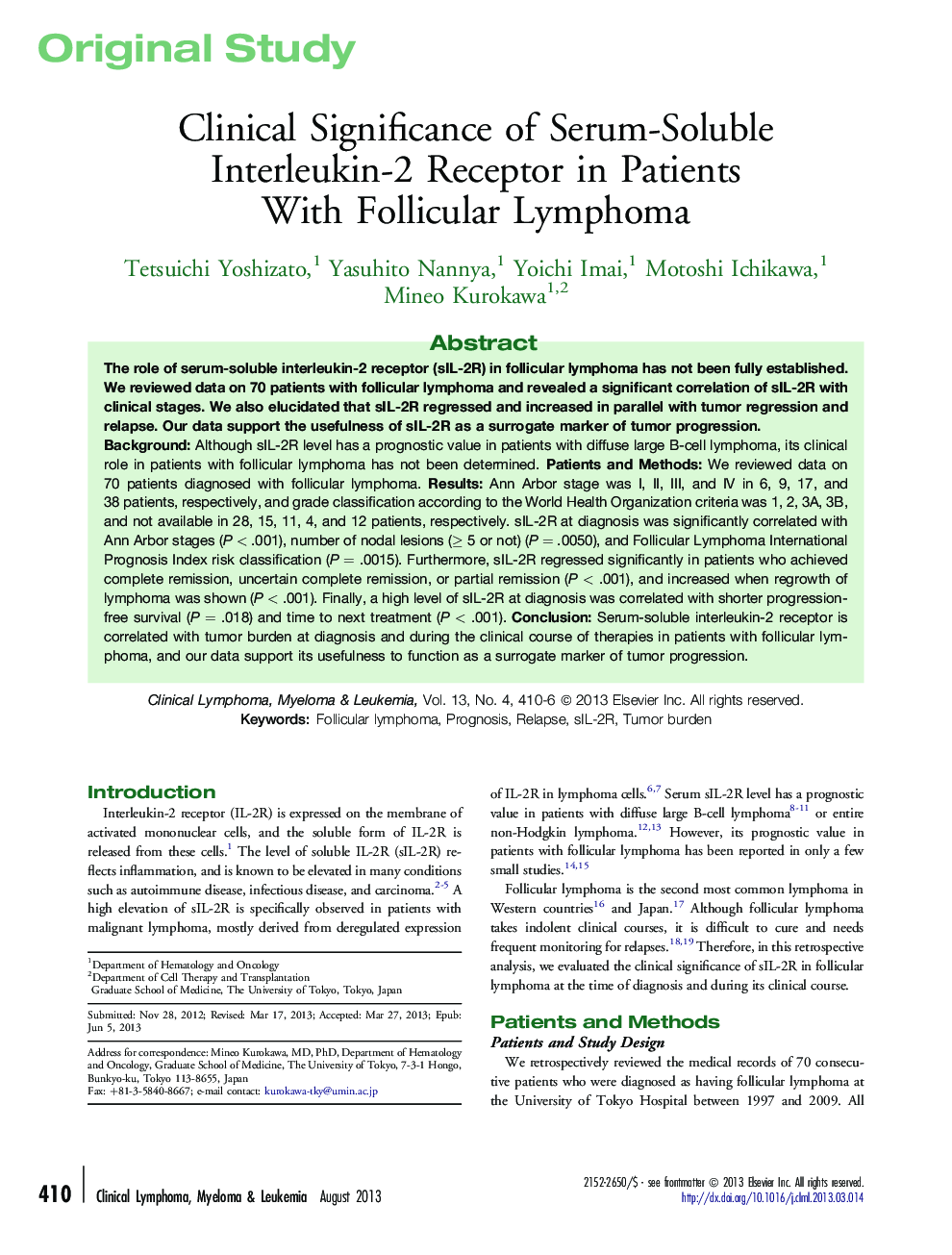| Article ID | Journal | Published Year | Pages | File Type |
|---|---|---|---|---|
| 2754987 | Clinical Lymphoma Myeloma and Leukemia | 2013 | 7 Pages |
BackgroundAlthough sIL-2R level has a prognostic value in patients with diffuse large B-cell lymphoma, its clinical role in patients with follicular lymphoma has not been determined.Patients and MethodsWe reviewed data on 70 patients diagnosed with follicular lymphoma.ResultsAnn Arbor stage was I, II, III, and IV in 6, 9, 17, and 38 patients, respectively, and grade classification according to the World Health Organization criteria was 1, 2, 3A, 3B, and not available in 28, 15, 11, 4, and 12 patients, respectively. sIL-2R at diagnosis was significantly correlated with Ann Arbor stages (P < .001), number of nodal lesions (≥ 5 or not) (P = .0050), and Follicular Lymphoma International Prognosis Index risk classification (P = .0015). Furthermore, sIL-2R regressed significantly in patients who achieved complete remission, uncertain complete remission, or partial remission (P < .001), and increased when regrowth of lymphoma was shown (P < .001). Finally, a high level of sIL-2R at diagnosis was correlated with shorter progression-free survival (P = .018) and time to next treatment (P < .001).ConclusionSerum-soluble interleukin-2 receptor is correlated with tumor burden at diagnosis and during the clinical course of therapies in patients with follicular lymphoma, and our data support its usefulness to function as a surrogate marker of tumor progression.
